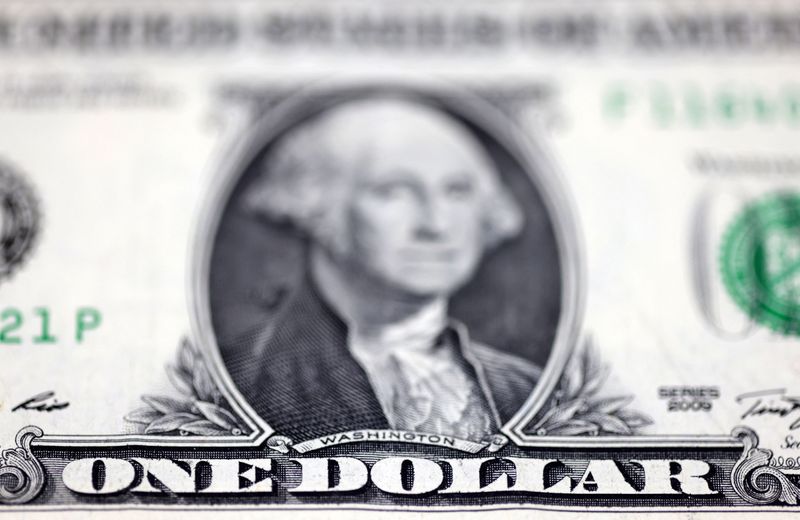By Karen Brettell
NEW YORK (Reuters) -The U.S. dollar fell to a four-month low on Friday after a weaker-than-expected July employment report raised expectations that the Federal Reserve will cut interest rates by 50 basis points in September as the economy sours.
Employers added 114,000 jobs, fewer than expected for an increase of 175,000. The unemployment rate rose to 4.3%, above economists’ expectations that it would remain unchanged at 4.1% this month.
Traders now see a 71% probability that the Fed will cut rates by 50 basis points in September, up from 31% before the data release and from 22% on Thursday, according to CME Group’s FedWatch Tool ( NASDAQ:).
A cut of at least 25 basis points for September is fully priced in and an easing of 116 basis points is now expected by the end of the year.
“This is what growth anxiety looks like. The market is now realizing that the economy is indeed slowing,” said Wasif Latif, president and chief investment officer at Sarmaya Partners in Princeton, New Jersey.
The price last fell 1.1% at 103.21, falling to 103.12, the lowest since March 14. It is the largest percentage drop in one day since November.
Government bond yields also plummeted, with the interest-sensitive two-year yield falling to 3.845%, the lowest level since May 2023, and the benchmark 10-year yield hitting a low of 3.79% for the first time since December 27.
The U.S. Department of Labor said Hurricane Beryl, which made landfall in Texas on July 8, had “no observable effect” on employment figures, dismissing one theory that could have explained the weakness.
“There’s no silver lining anywhere, as far as I know. They say they haven’t had any kind of hurricane impacts, and if they did, that’s not enough to offset the amount of softness we’re seeing” , said Steve Englander. , head of global G10 FX research at the New York Branch of Standard Chartered (OTC:).
However, some economists were not convinced that Beryl had no impact, and saw some bright spots in Friday’s jobs figures.
The Fed kept rates unchanged at the end of its two-day meeting on Wednesday and Fed Chairman Jerome Powell said rates could be cut as early as September if the U.S. economy follows the expected path.
Chicago Fed President Austan Goolsbee said Friday that the U.S. central bank should move in a “steady” manner, a mild setback to market prices for rate cuts.
Softer jobs data, a weak manufacturing report and some disappointing business prospects in recent days have raised fears that the economy is deteriorating at a faster pace.
But despite Friday’s weak jobs report, Englander notes that “most other indicators are not consistent with a really sharp slowdown right now… Everything is soft, but nothing is catastrophically soft.”
New economic releases will now be watched even more closely to confirm whether growth prospects are as poor as feared.
The dollar weakened 1.84% to 146.62 Japanese yen, falling to 146.42, the lowest since February 2.
The yen has risen since hitting a 38-year low of 161.96 against the dollar on July 3, boosted by interventions by Japanese authorities and traders unwinding carry trades in which they went short the yen and long assets in the US dollar.
Interest rates received an additional boost on Wednesday when the Bank of Japan raised interest rates to 0.25%, the highest level since 2008.
The Japanese yen and Swiss franc were also boosted by safe-haven demand amid stock sell-offs and geopolitical concerns.
The funeral of Hamas leader Ismail Haniyeh took place in Qatar on Friday, following his assassination two days ago in the Iranian capital Tehran, which investors fear could lead to a wider conflict in the Middle East.
The dollar weakened 1.58% to 0.859 Swiss francs
The euro rose 1.12% to $1.0912 and reached $1.0927, the highest level since July 18.

Sterling strengthened 0.53% to $1.2807, recovering from a one-month low after the Bank of England cut interest rates from a 16-year high on Thursday.
In cryptocurrencies, bitcoin fell 2.74% to $62,878.


